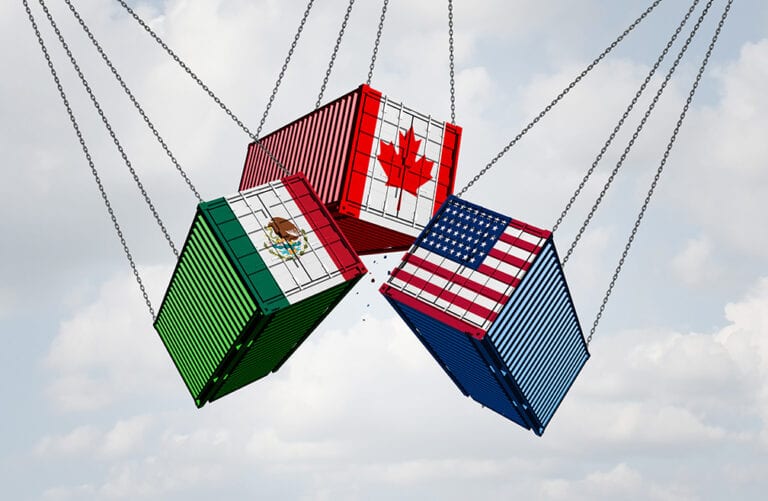WASHINGTON — A report released by the U.S. Bureau of Transportation Statistics (BTS) March 8 showed a 13.3% drop in transborder freight in 2020 compared to 2019. According to report, which reflects freight moved by truck, rail, pipeline, air and vessel, the decline began at the onset of the COVID-19 pandemic and continued through November. December’s transborder freight saw a slight increase of 0.4%.
Trucking was the most-used mode for transborder shipments, moving $695 billion (65.3%) of the year’s total of $1.06 trillion in freight, but still saw a 10% drop from 2019.
Trucks crossing the U.S.-Canada border moved $309 billion, or 58.8% of all northern border freight, while truckers moved $386 billion between the U.S. and Mexico (71.1% of all southern border freight). Shipments between the U.S. and Canada saw a 9.9% drop, while U.S.-Mexico freight fell by 10.1%.
The busiest truck border ports, accounting for 44.6% of total transborder truck freight for 2020, were Laredo, Texas ($163 billion); Detroit ($95 billion); and Buffalo-Niagara Falls, New York ($51 billion).
The top three truck commodities, accounting for 48.3% of total transborder truck freight for the year, were computers and parts ($136 billion), electrical machinery ($110 billion) and motor vehicles and parts ($89 billion).
Rail was the second-most-used mode for transborder shipments, moving $148 billion (14%) of all freight.
The total amount of freight moved between the U.S. and Canada (both directions) by mode was:
- Truck: $309 billion;
- Rail: $79 billion;
- Pipeline: $48 billion;
- Air: $32 billion; and
- Vessel: $20 billion.
Almost all (99.4%) of pipeline freight between the U.S. and Canada were mineral fuels, primarily oil and gas. Most of these freight flows were on pipelines linking Canada and the American Midwest.
Between the U.S. and Mexico (both directions) total freight moved by mode was:
- Truck: $386 billion;
- Rail: $70 billion;
- Vessel: $48 billion;
- Air: $14 billion; and
- Pipeline: $5 billion.
Of freight by vessel between the U.S. and Mexico, $22 billion, or 44.9% were mineral fuels, primarily oil and gas shipments between Gulf of Mexico ports in the U.S. and Mexico. More than half of those shipments went through Texas ports.
Data in the BTS release is not seasonally adjusted and is not adjusted for inflation.
The Trucker News Staff produces engaging content for not only TheTrucker.com, but also The Trucker Newspaper, which has been serving the trucking industry for more than 30 years. With a focus on drivers, the Trucker News Staff aims to provide relevant, objective content pertaining to the trucking segment of the transportation industry. The Trucker News Staff is based in Little Rock, Arkansas.














